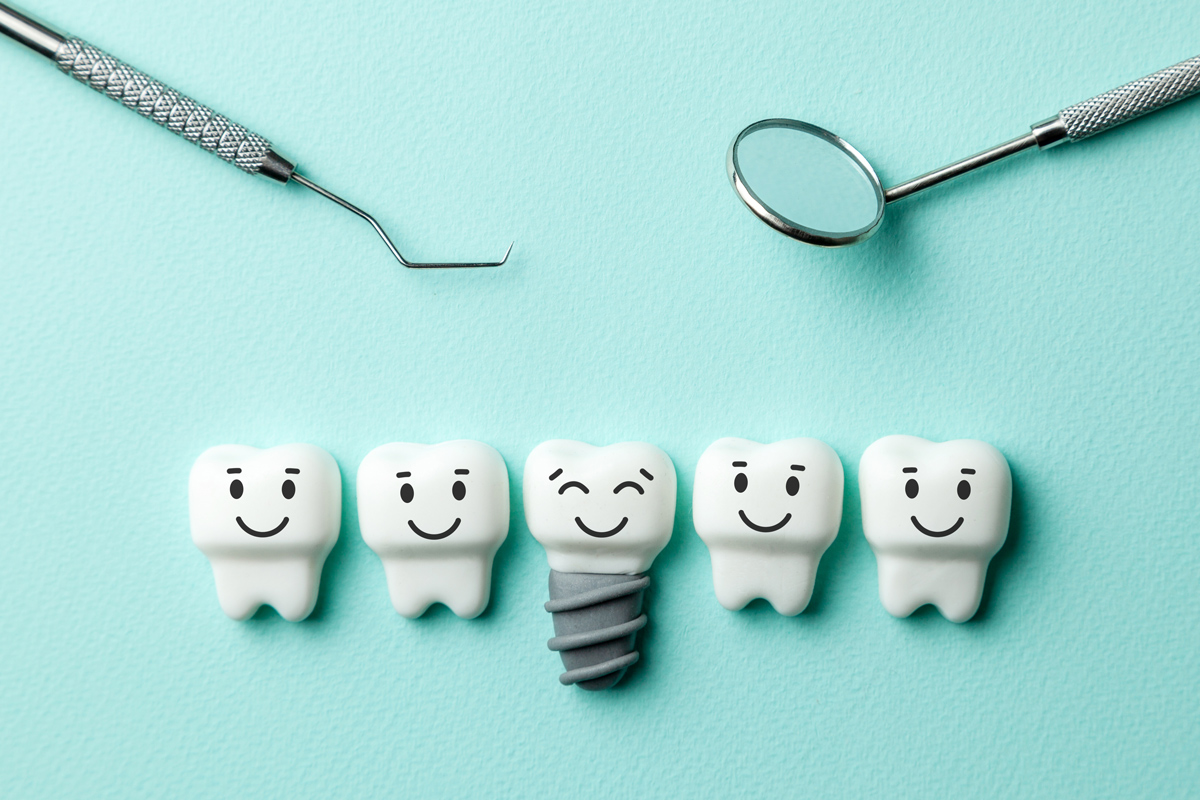Whether you want to “repair” a damaged tooth or replace a missing tooth, there are quite a few tooth restoration options available today. There are many factors that go into choosing which option is right for you, and you will definitely want to speak to your local periodontist.
But it also helps to have a basic, broad understanding of what modern dentistry has to offer as far as tooth restoration is concerned. Below, we present the 7 most popular choices used today – leading up to dental implants as the ideal method of replacing missing teeth.
1. Dental Veneers
Sometimes, you are only missing a tiny chip out of a tooth that is otherwise in good shape. Or there may be a slight crack in it. One way to correct this situation is through what is called “dental veneers.”
A dental veneer is a paper-thin surface that is attached to the front of a tooth with non-toxic but firm-gripping dental glue. It can closely match your natural tooth color, and most people won’t even notice you are wearing veneers.
2. Dental Bonding
A dental veneer is not always the best way to correct chips and cracks. In some cases, simply putting dental bonding material into the fissure works fine. The bond will blend in with the rest of the tooth and not be very visible.
Also, if a patient still has his or her “baby teeth,” then it makes little sense to use a veneer. It makes more sense to use dental bonding until the permanent tooth comes in.
3. Modern Fillings
Dental fillings have come a long way over the past few decades, and today, they can closely mimic the look and texture of your natural tooth and firmly stay in place for many, many years.
After the removal of a cavity, a filling will be placed to fill the hole left after the infected tooth material is removed. Silver amalgam used to be the common material used for fillings, and some still opt for that – but you now can choose among tooth-colored composite resins, gold, silver, and more.
4. Root Canals And/Or Crowns
When a cavity breaks through your tooth’s enamel and infects the inner pulp of the tooth – or if that pulp gets damaged in any other way, it may still be possible to save the tooth through a root canal procedure. The pulp is removed, the tooth cleaned and filled, and the tooth capped with a dental crown.
However, there are other times when crowns are used too. For example, a tooth may be badly cracked or worn down but not need a root canal. Instead of extracting the tooth, placing a dental crown on top to strengthen it may be a viable option.
5. Dental Bridges
The last three categories we mention concern those who have lost one or more teeth or who will need to have one or more teeth extracted. Your three basic options are bridges, dentures, and dental implants.
Bridges work best when there is only a small gap left by one tooth that is missing or by two or three teeth (scattered) at most. The artificial tooth is attached to adjacent teeth with specialized braces and posts and dental cement.
You may have to have bridges professionally cleaned (and removed and cleaned under before re-placing them) at points, unlike dental implants, but they work well in some situations, at least.
6. Removable Dentures
Traditionally, the solution to major (extensive) tooth loss has been removable dentures. These are made out of acrylic and shaped to the contours of your mouth. Artificial teeth are embedded into them in the locations where your natural teeth are missing – be that just a few spots or all or nearly all of your teeth.
Some kind of denture “putty” may be needed to keep the dentures in place consistently – especially on the upper jaw. And the dentures have to be cleaned daily and taken off while you sleep, exercise, or engage in vigorous activities.
There are many drawbacks to traditional dentures, however, like rubbing and discomfort on your gums, high maintenance needs, affects on how one speaks or eats, lifestyle limitations, and the needs for frequent replacement (every few years.) Dental implants solve all of those problems and don’t necessarily cost that much more over the long run.
7. Modern Dental Implants
Modern dental implants replace missing teeth with a titanium implant rod that looks something like a screw. It is embedded below the gum line and will fuse to the underlying bone mass in a process called osseointegration.
A dental crown is then attached to the top of the dental implant. Small posts are sometimes used to help support the implant, but no attachment to neighboring teeth is needed with dental implants as with dental crowns.
Dental implants have a 99% success rate and are more affordable than people think. Plus, most dental insurance covers them. Also, they last for decades and can be cared for just like natural teeth.
To learn more about dental implants, how they work, and whether they or another tooth restoration option may be right for you, contact Ormond Beach Periodontics & Implant Dentistry today! We are located in Central Florida and have a sterling local reputation.
